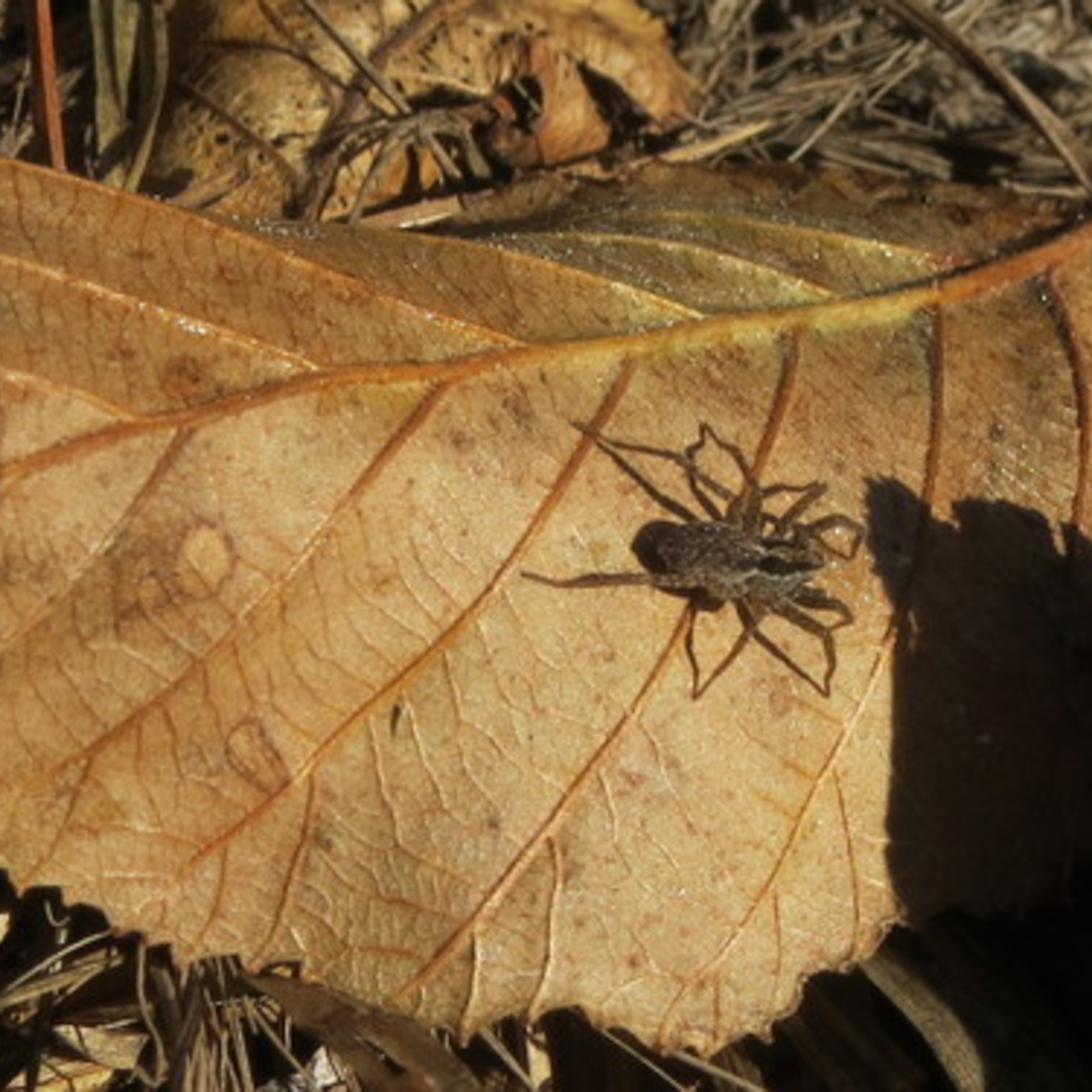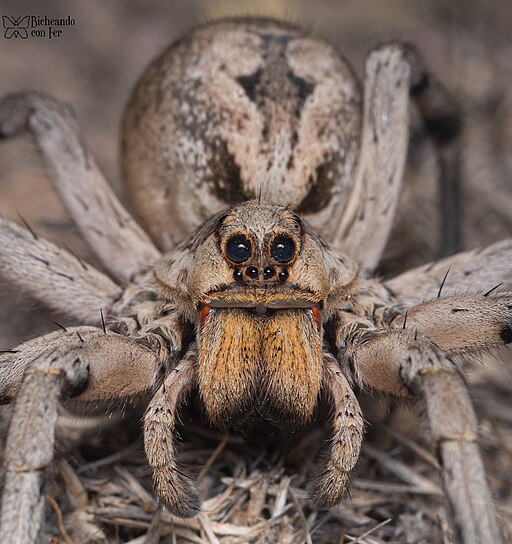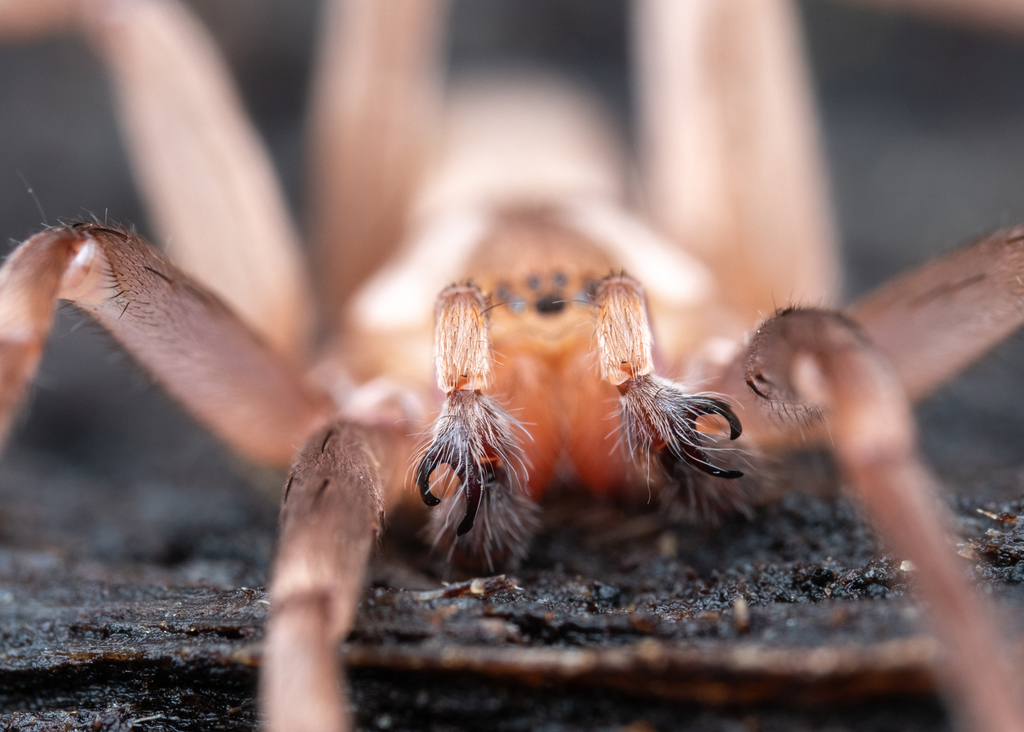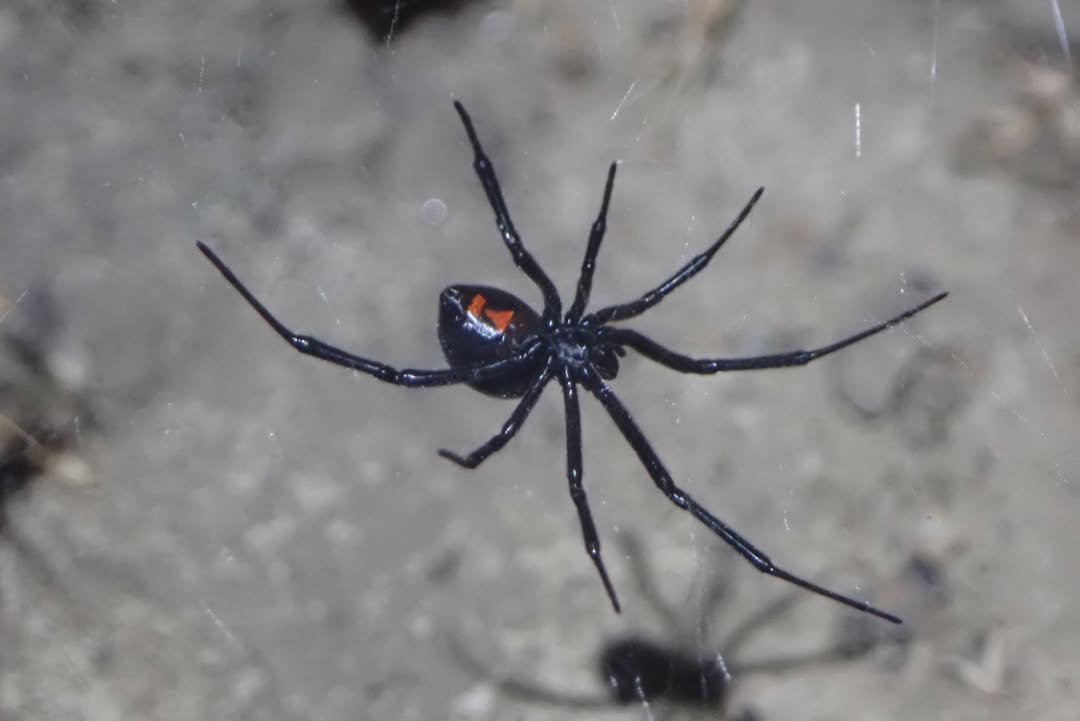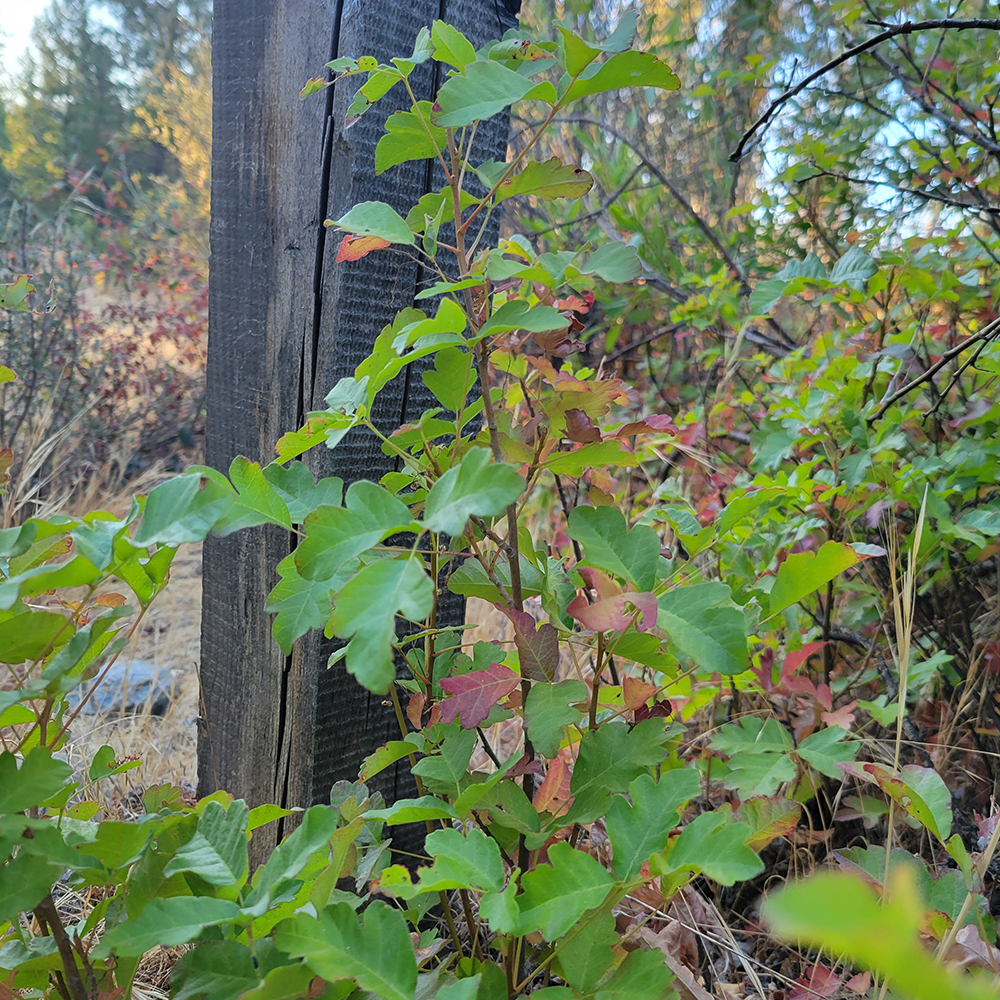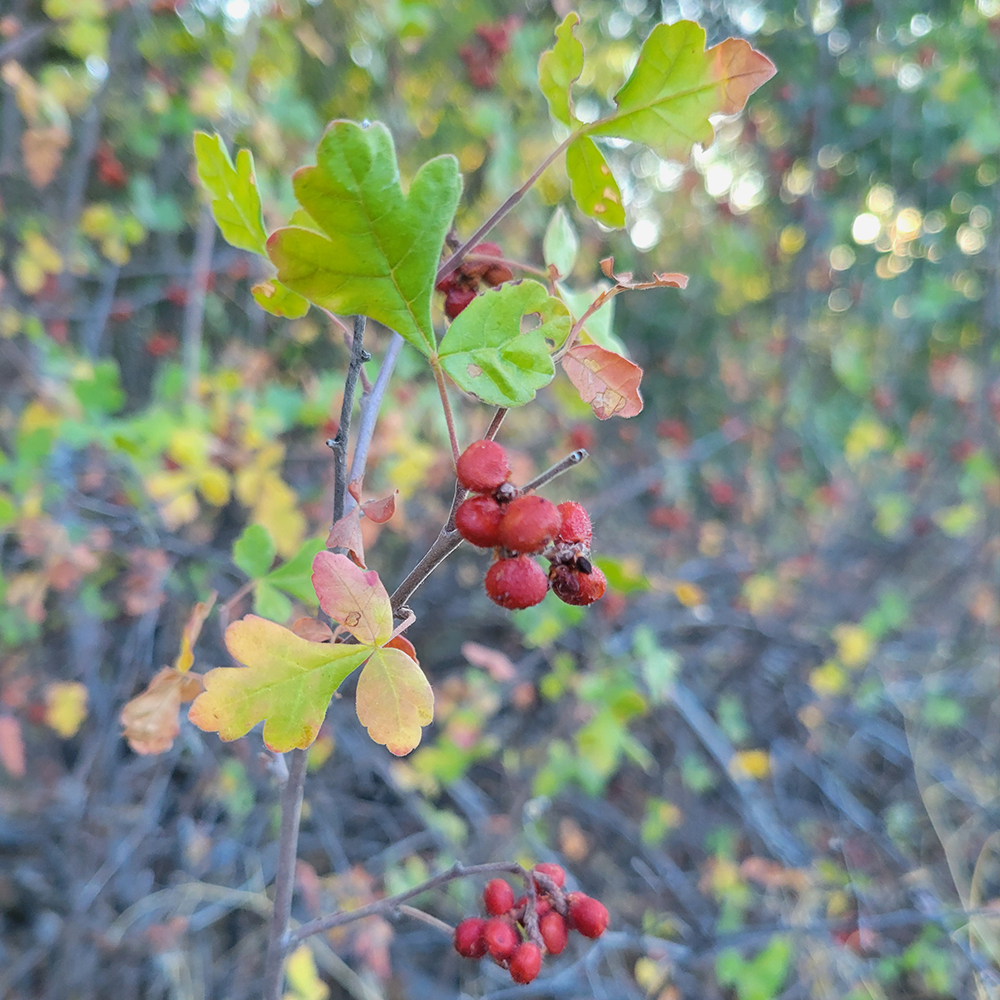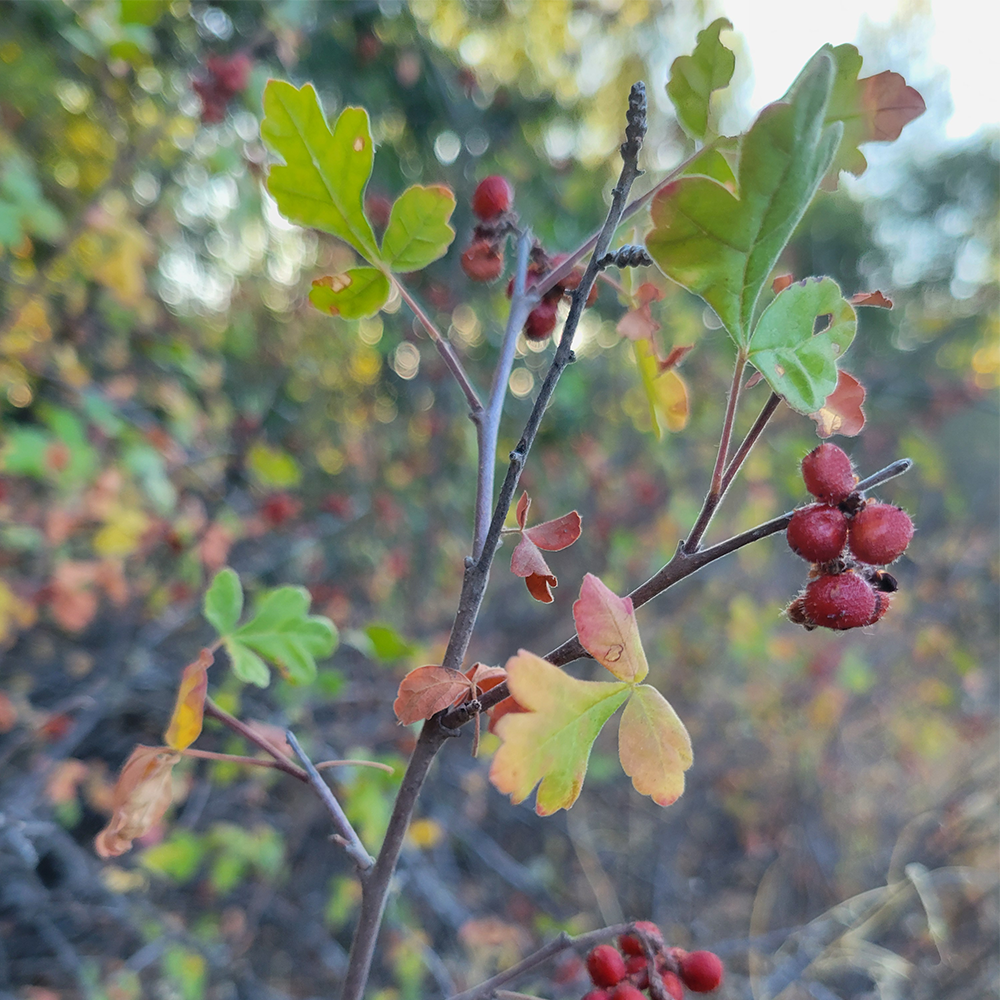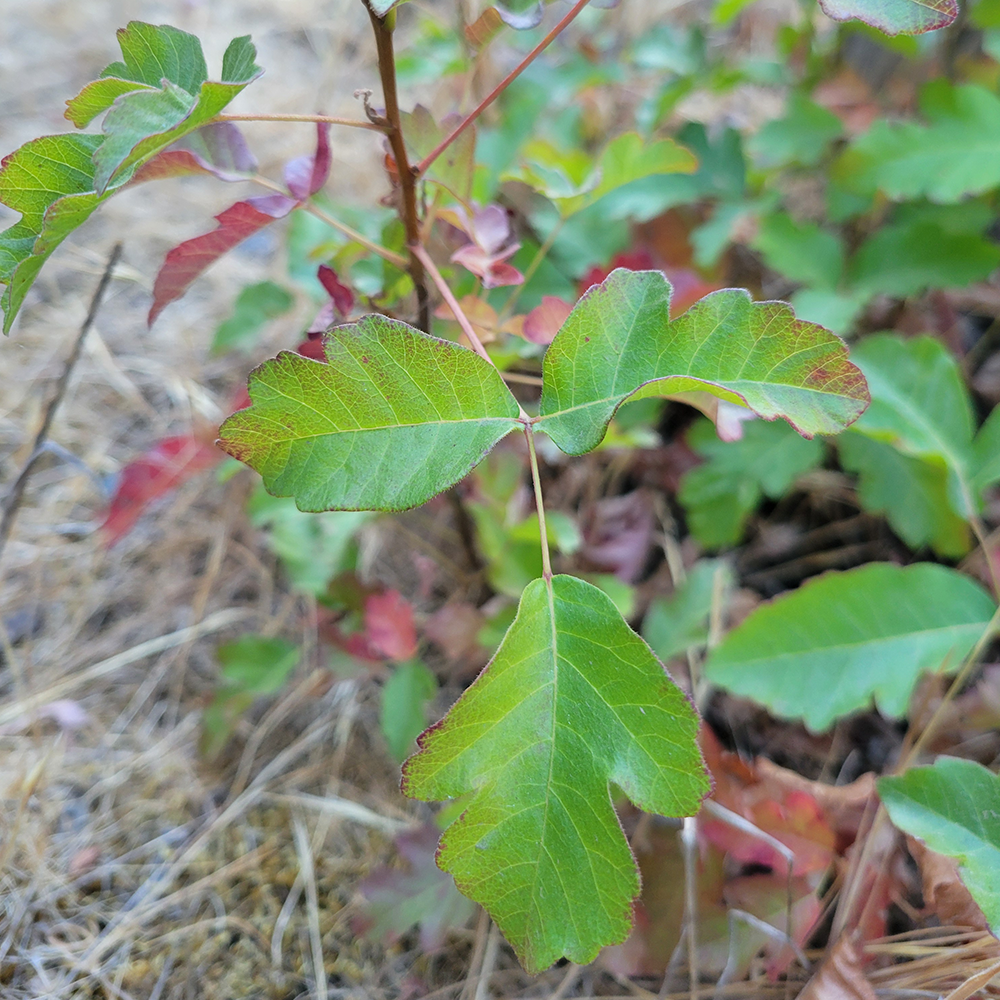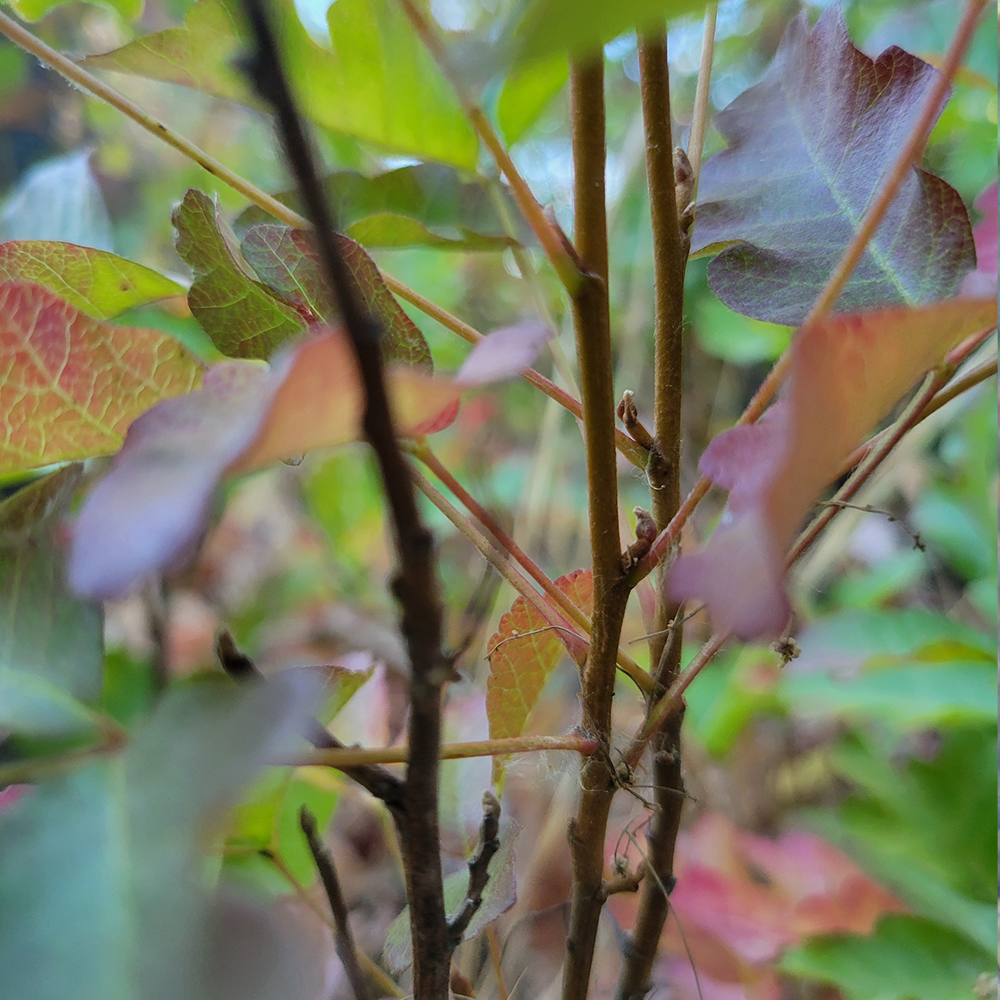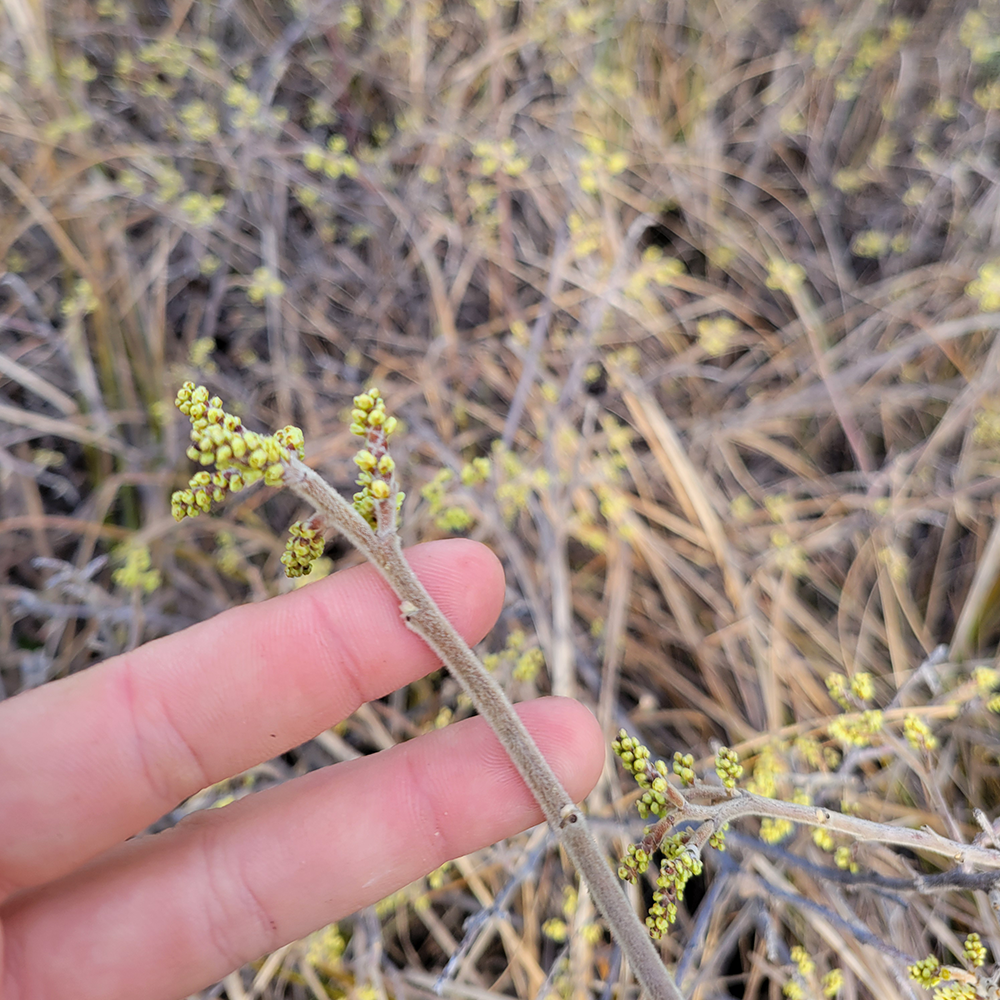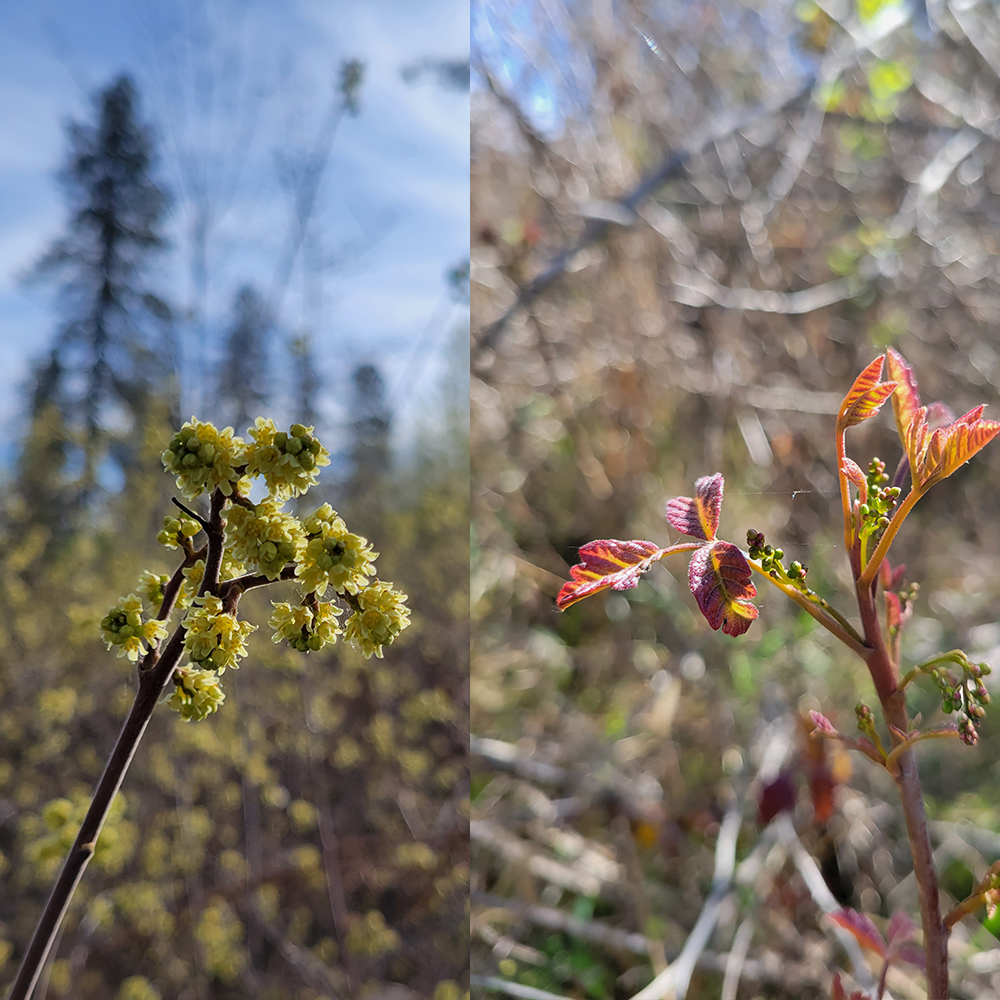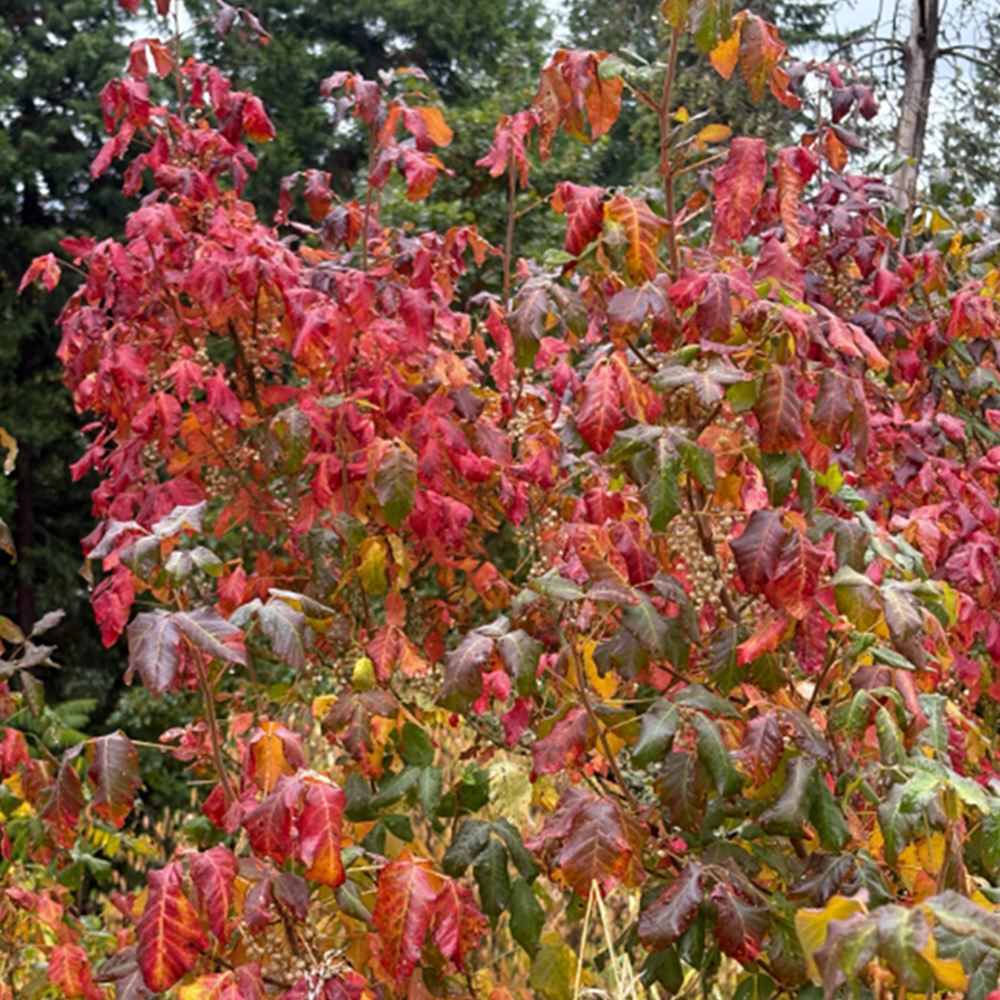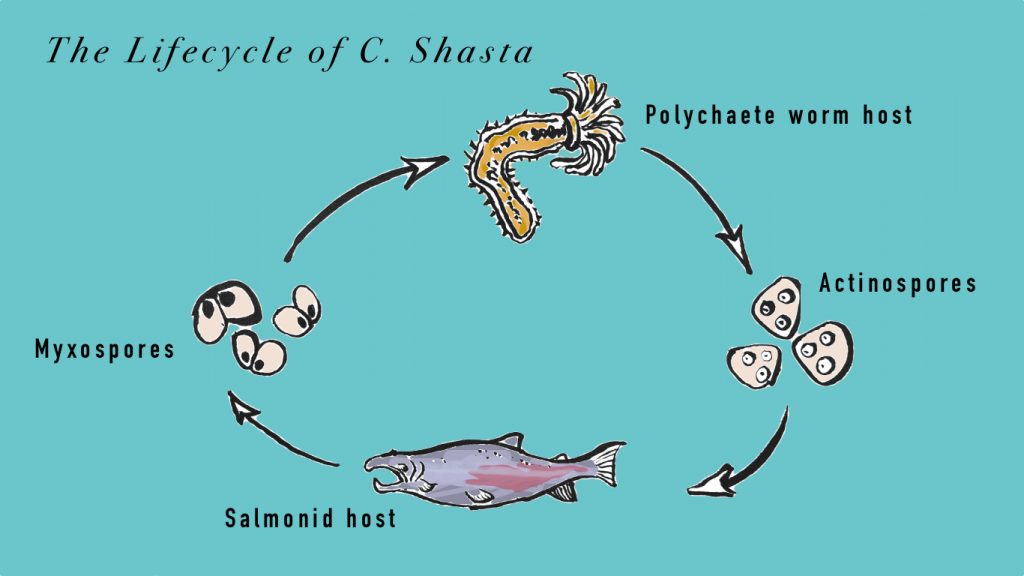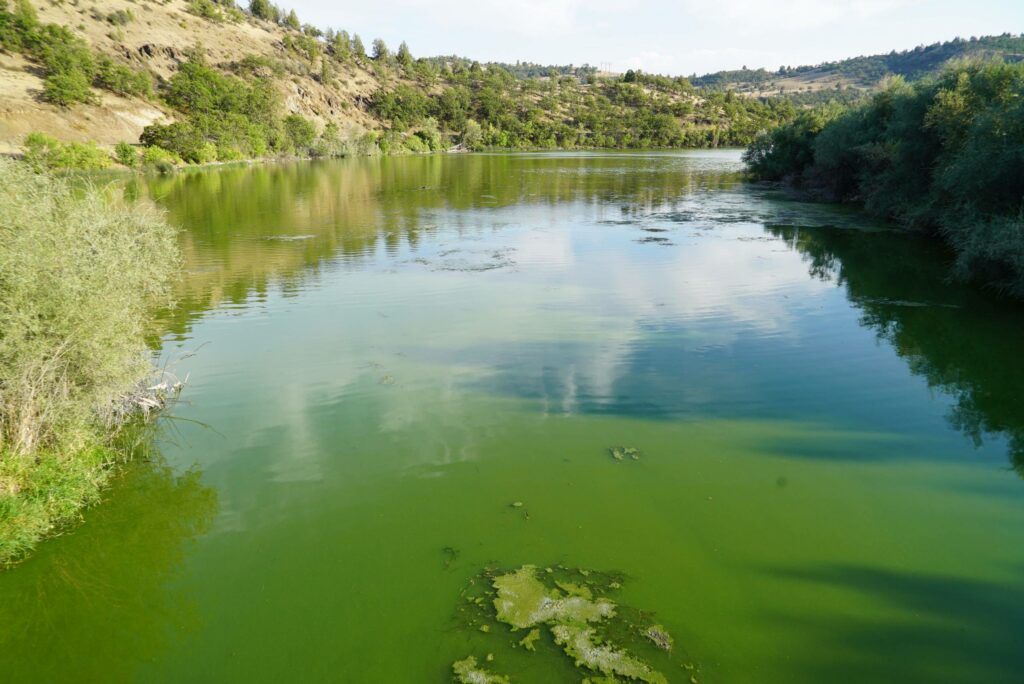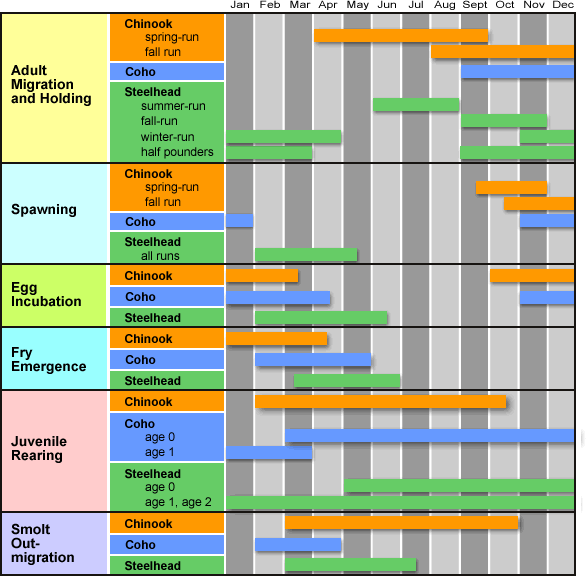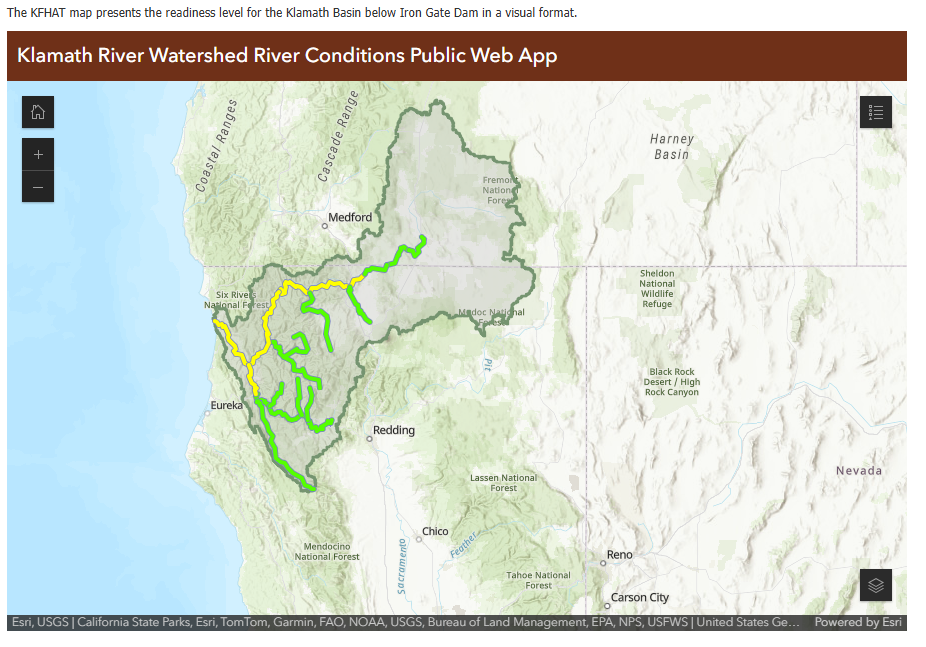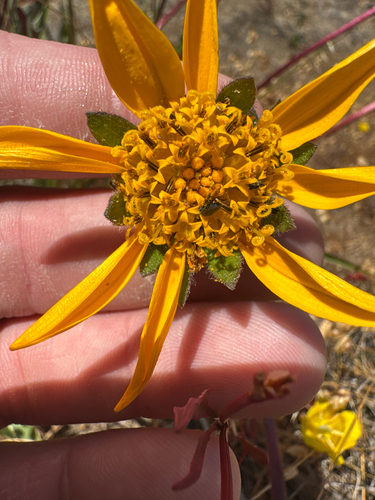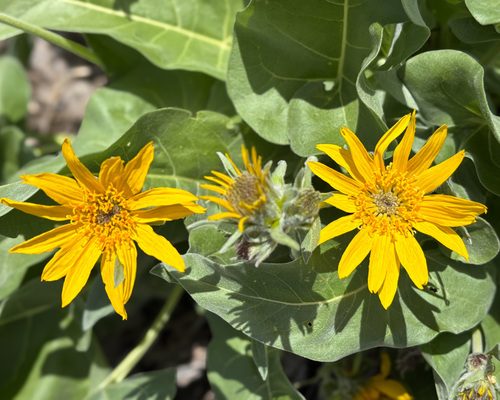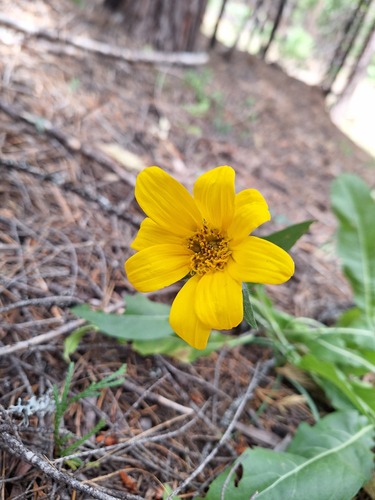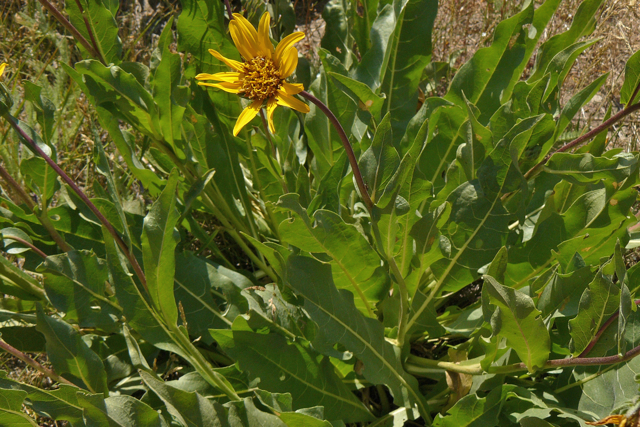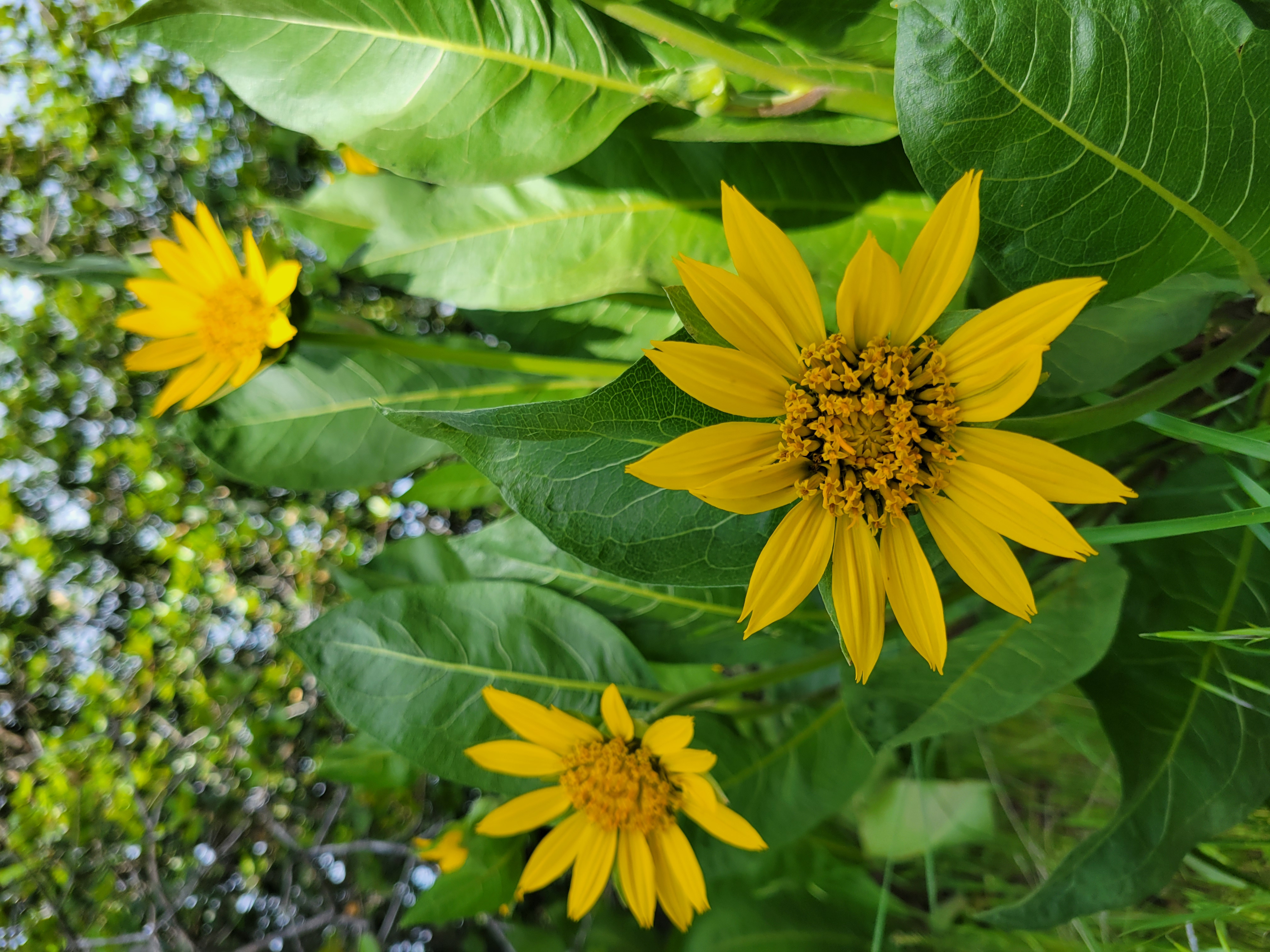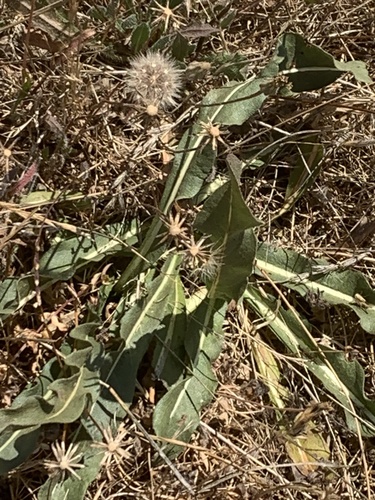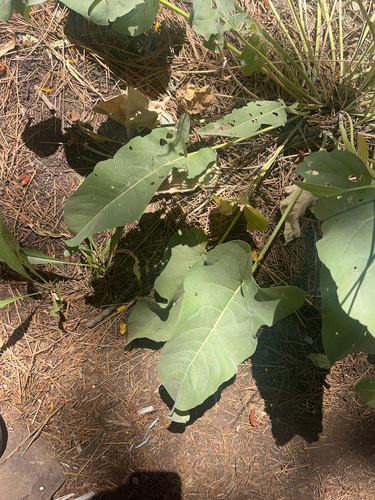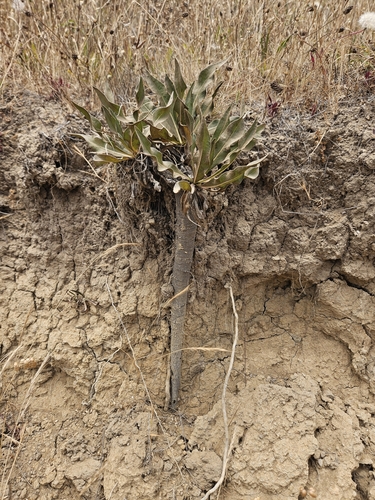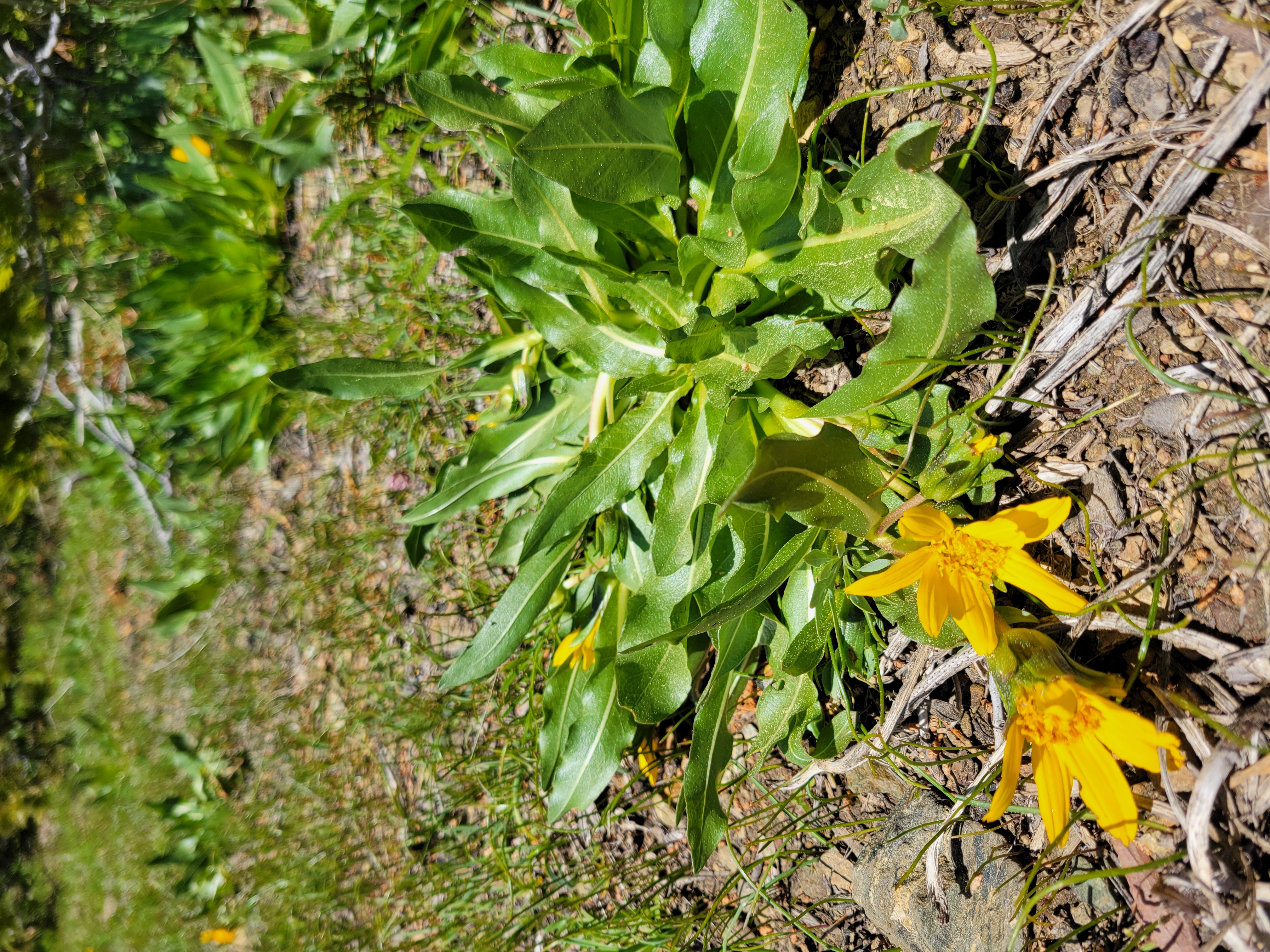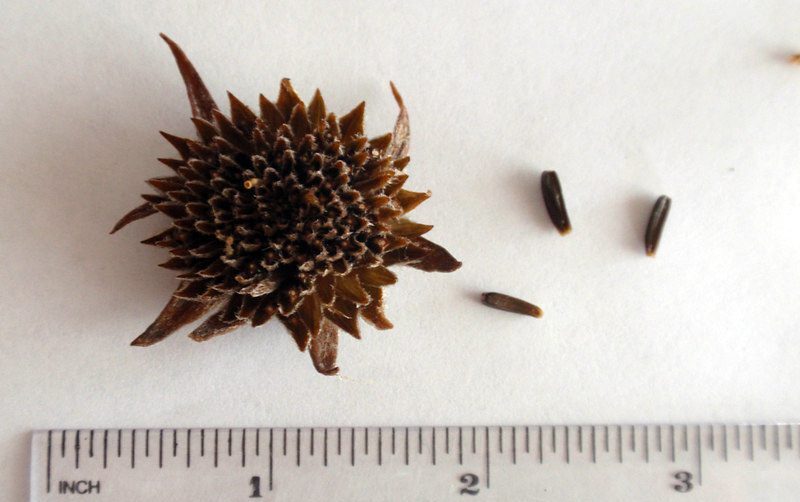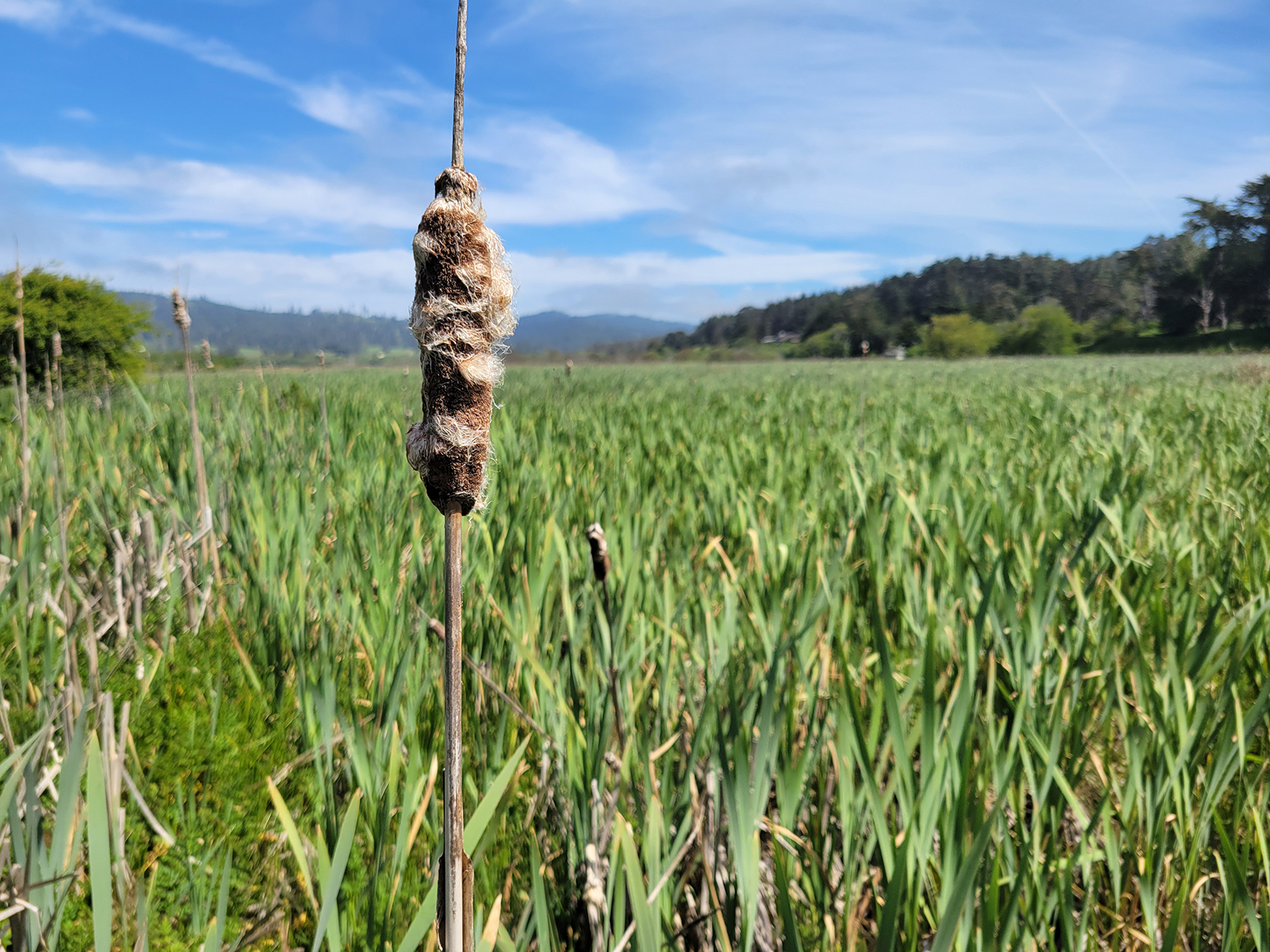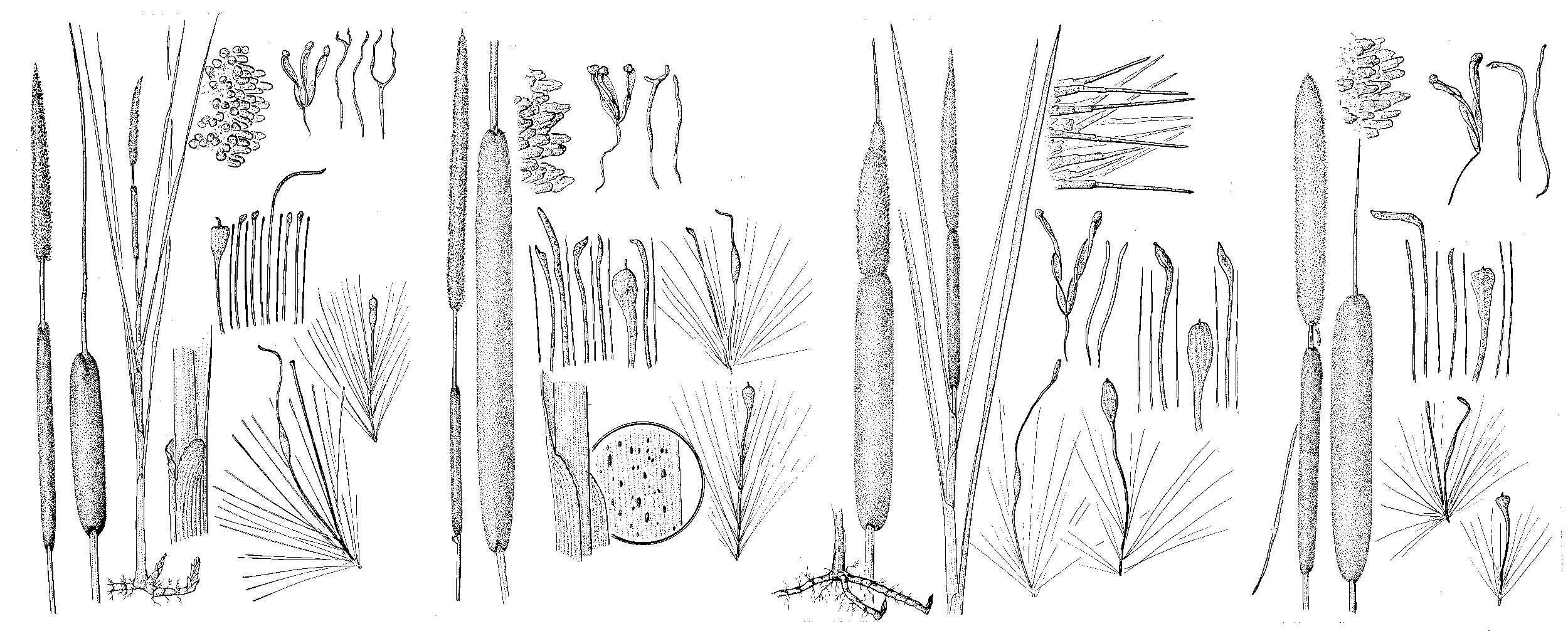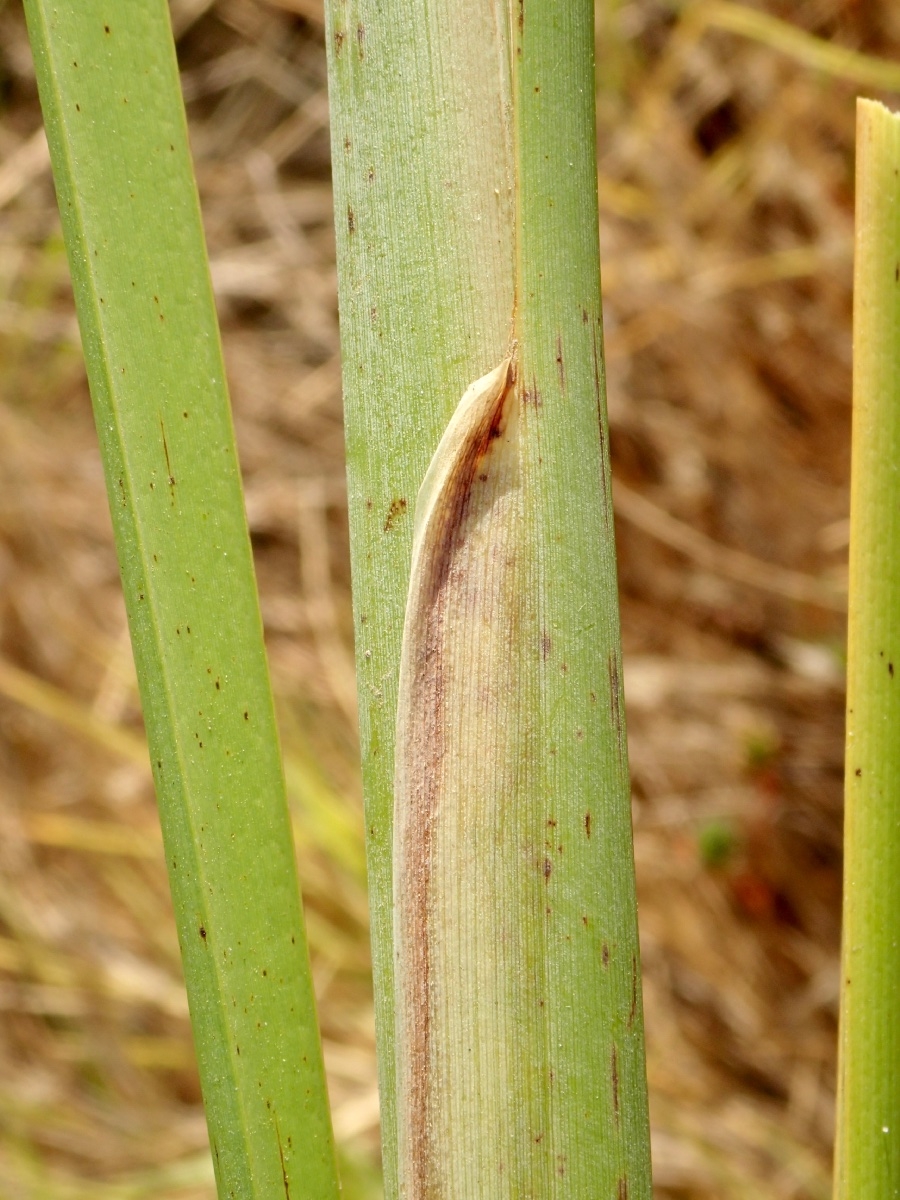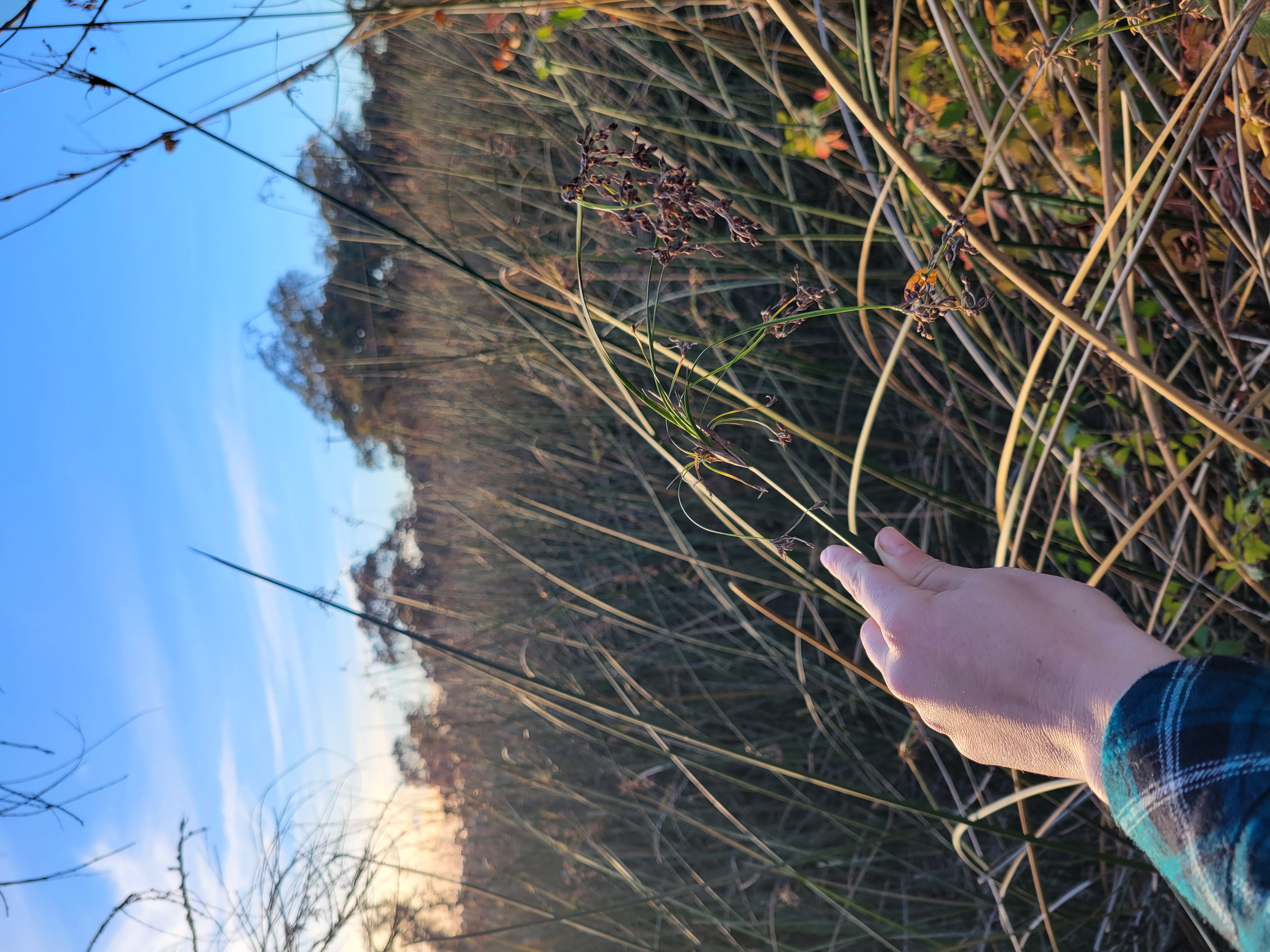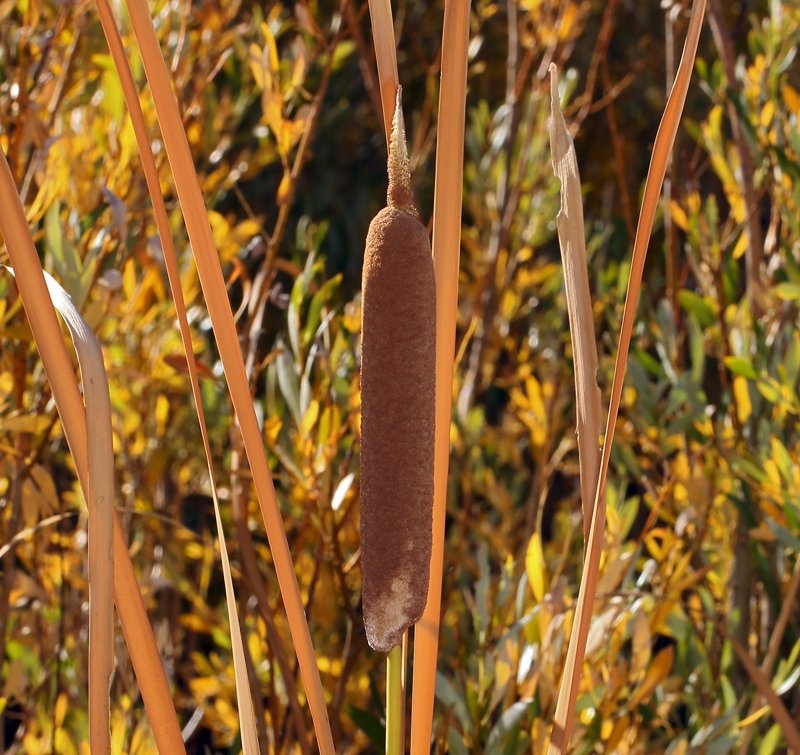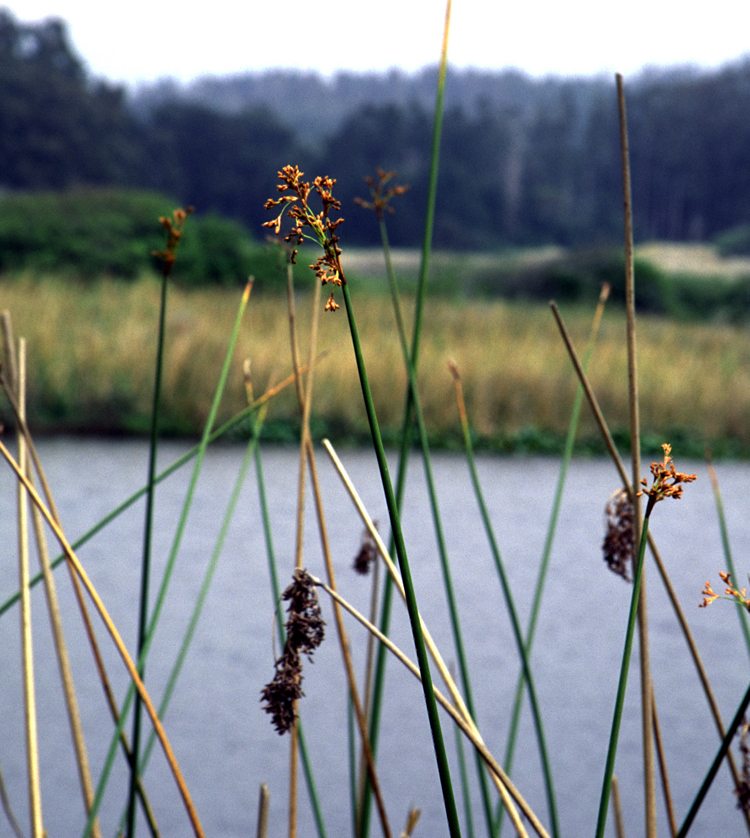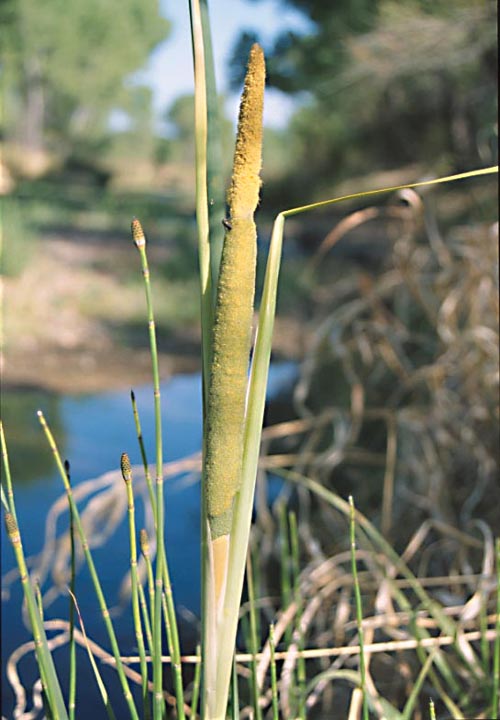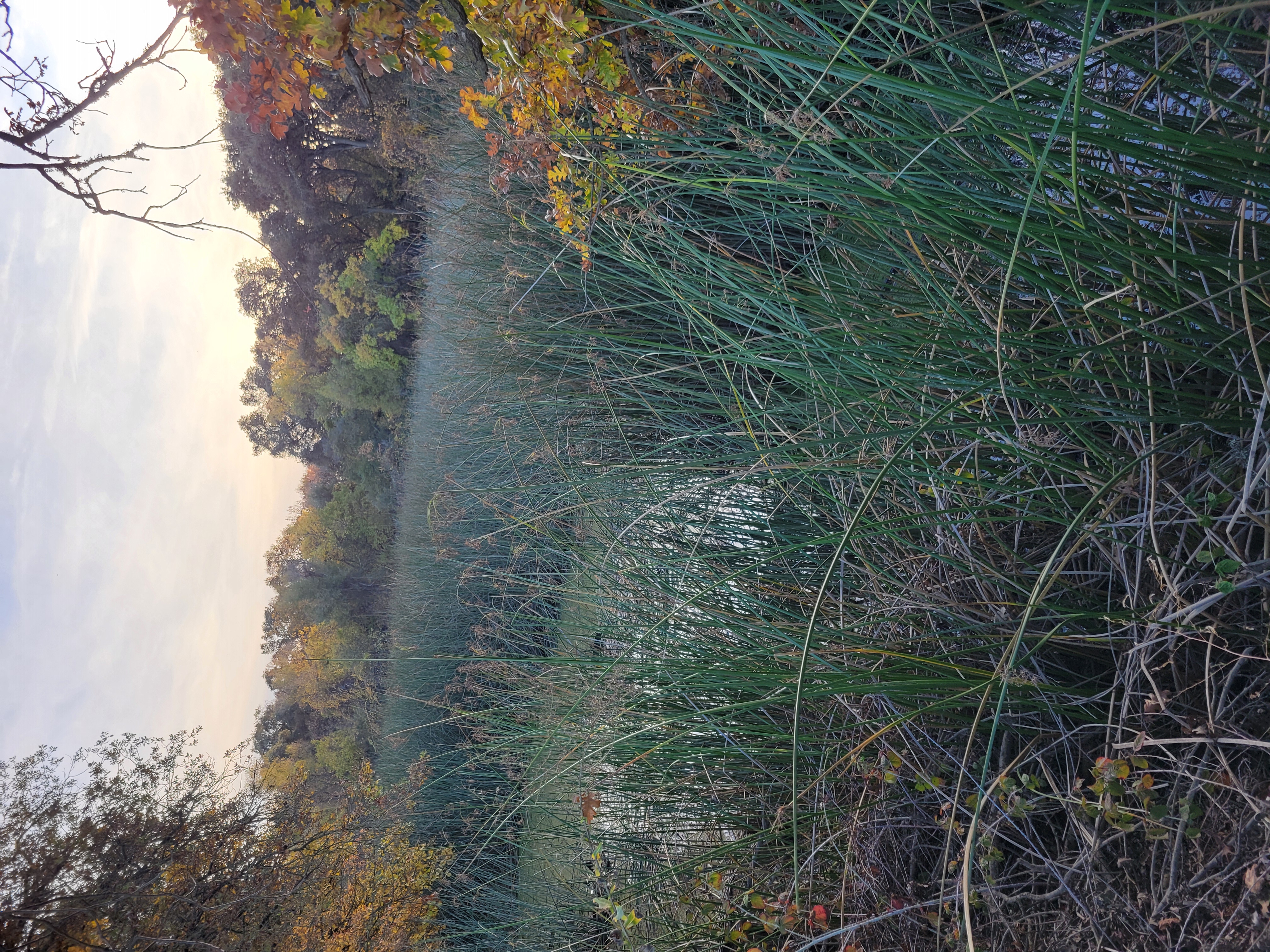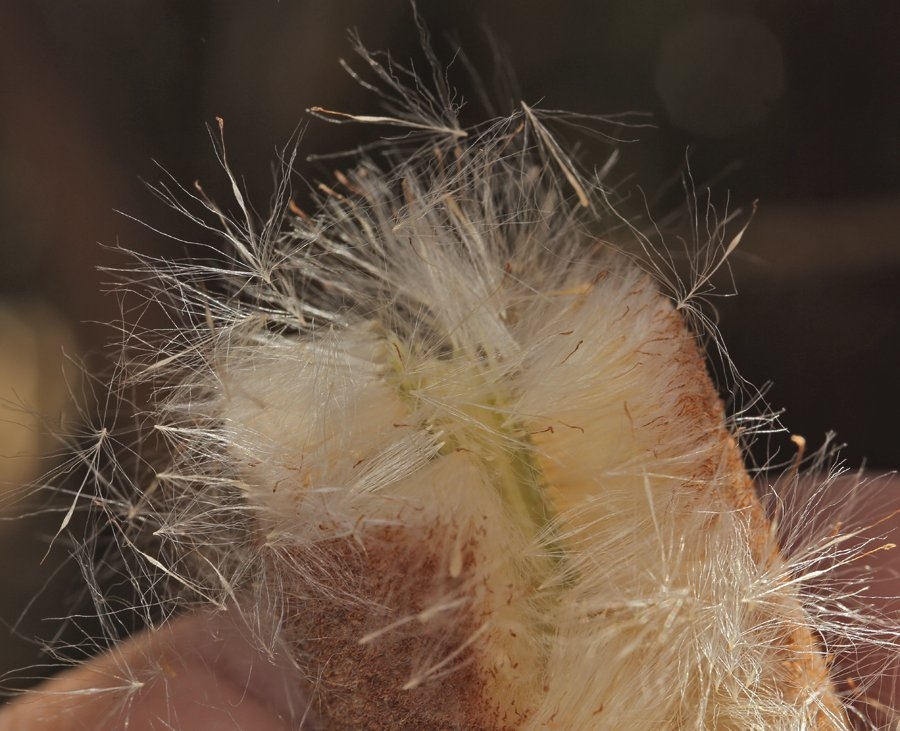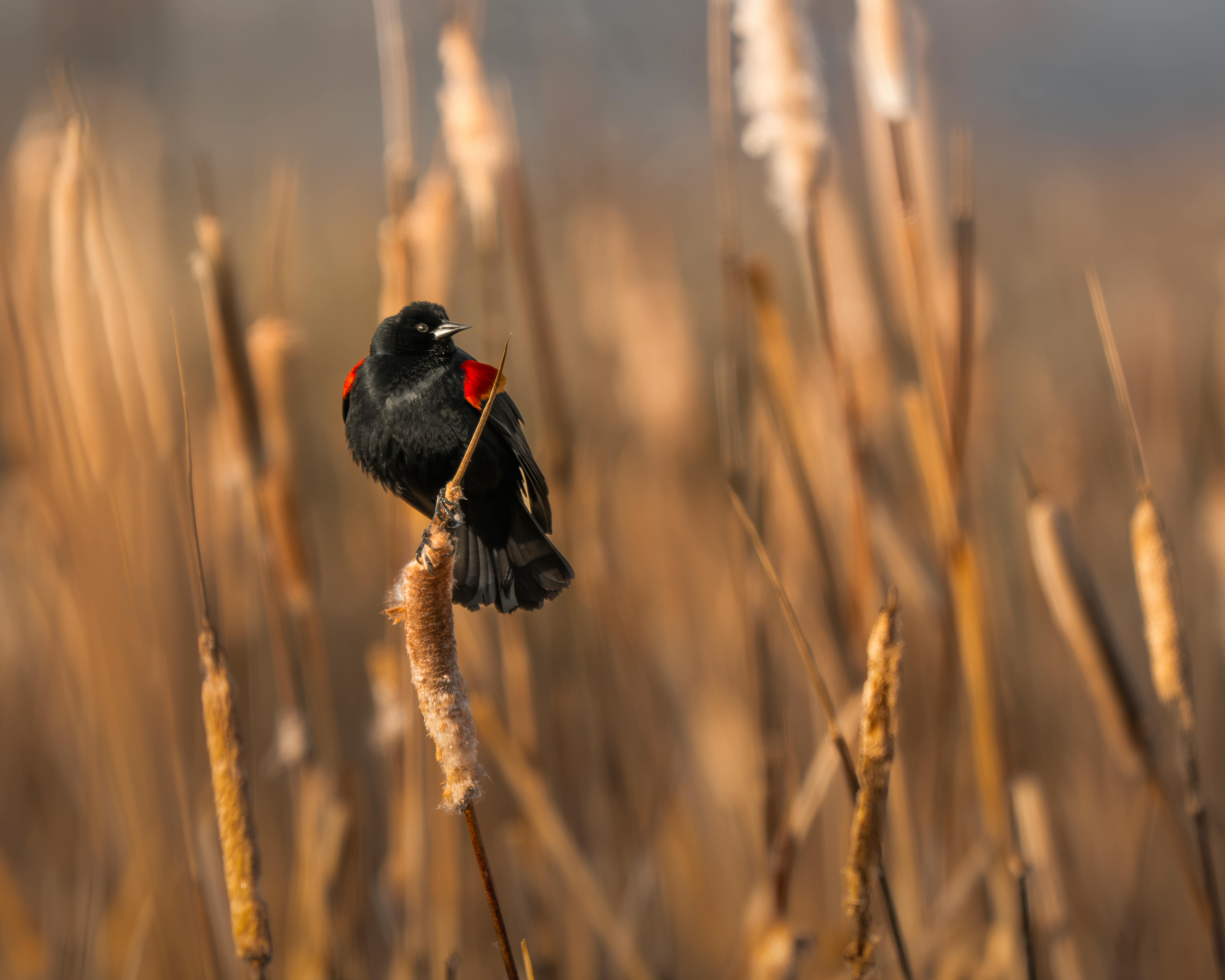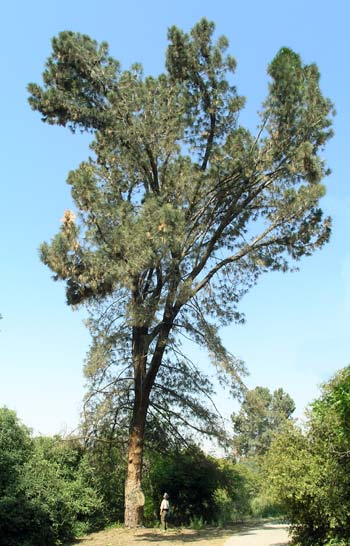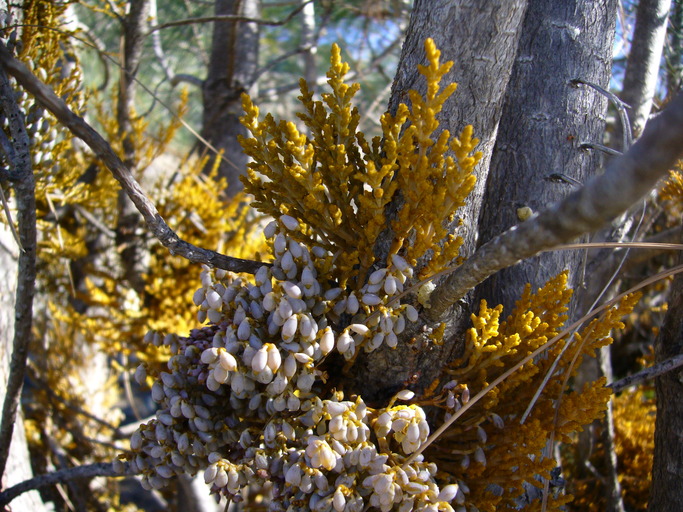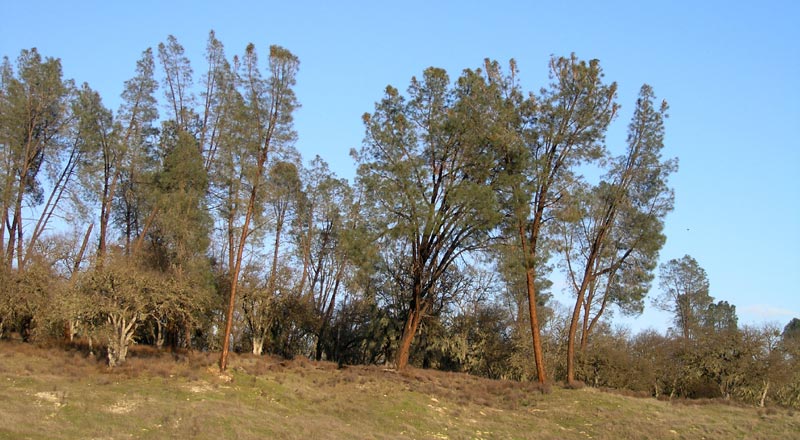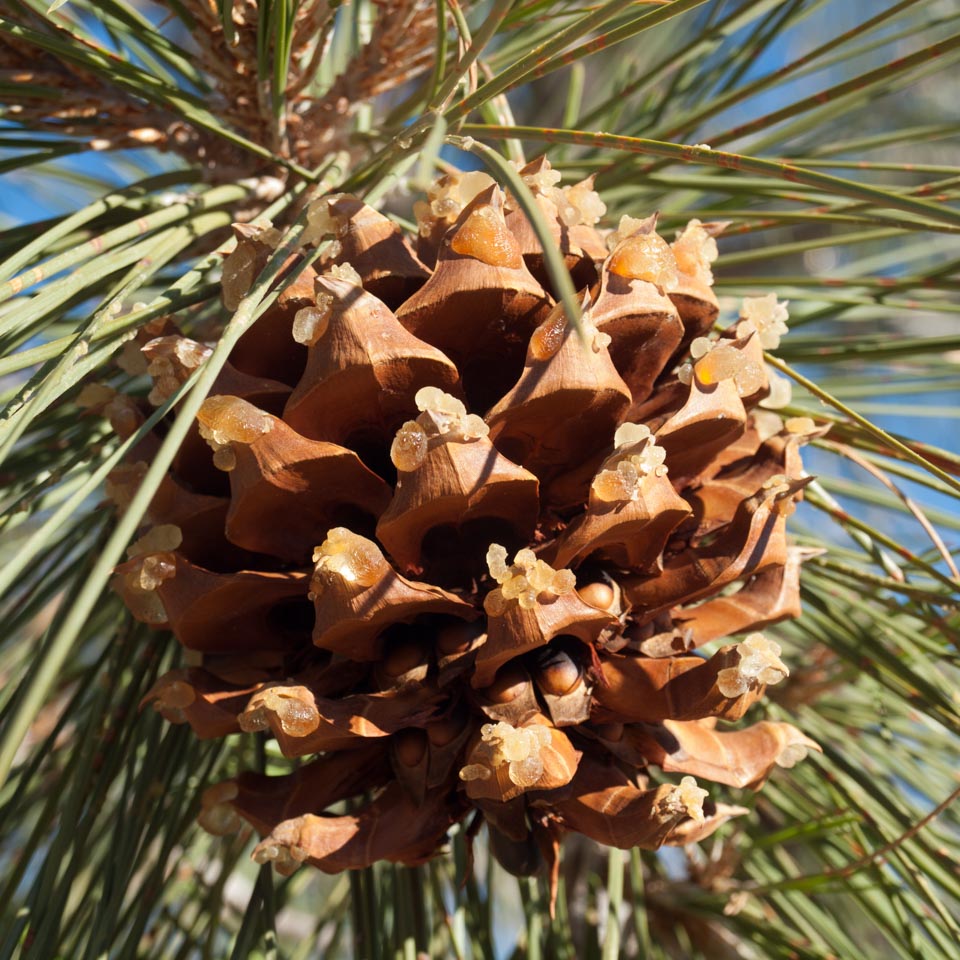Family: Lycosidae
Wolf spiders are an incredibly common spider worldwide with 2400 described species that range in many different habitats, vary in size and coloration, have incredible eyesight and hunt by ambushing, chasing, pouncing and or tackling its prey. In fact, wolf spiders are classified to the Lycosidae family of arachnids, so named after the Greek word (from Ancient Greek λύκος (lúkos)) for wolf due characteristic hunting tactics of the two species.
California is home to more than 120 species of wolf spiders, ranging from tiny ground dwellers in the genus Pardosa (thin legged wolf spider) to the quite large Hogna carolinensis (Carolina wolf spider). When discerning between genera of wolf spiders, they can be very difficult to identify in the field without holding each type in your hand [or by using this genius method]. Although the wolf spider’s bite is not dangerous to humans (akin to a bee sting) capturing one on camera or in your hand can be difficult because they are fast – and they are, well. Mostly big. Also hairy. And a spider.
Commonly all wolf spiders share traits such as parental care, eight eyes, active hunting techniques and coloration that hides them within their habitat. Knowing these identifying factors, the wolf spider can be distinguished quite easily from other common California spiders such as the brown recluse look alike, Titiotus californicus, tarantulas or black widow.
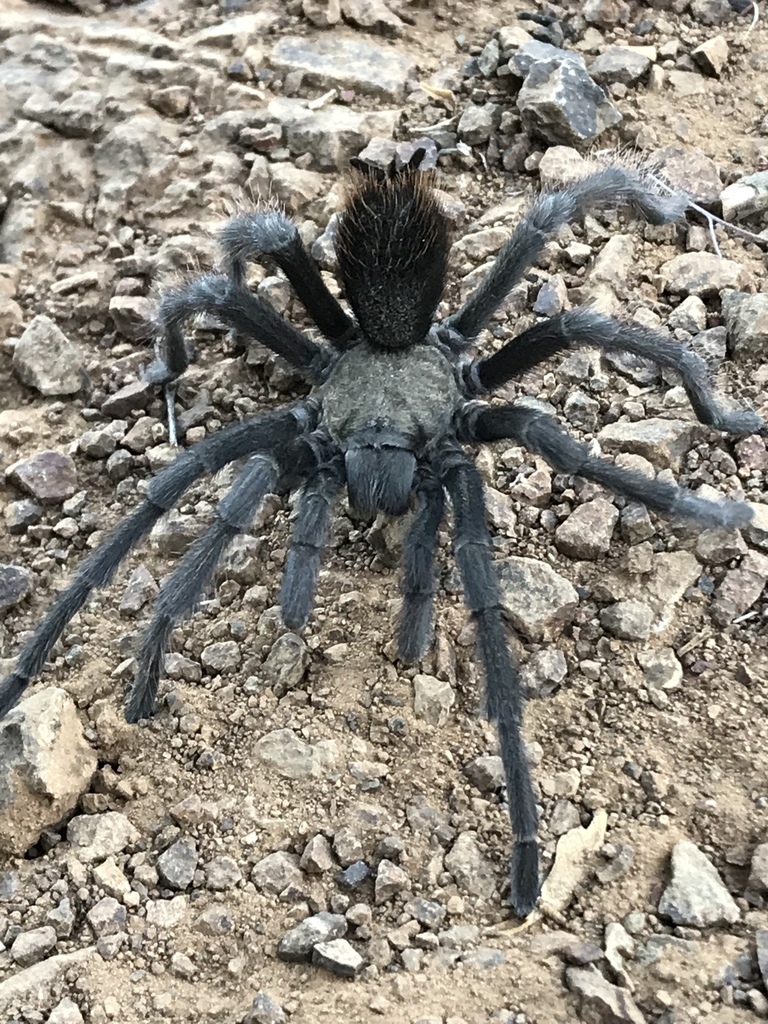
Within the Lycosidae family there are 56 described spiders in the genus Schizocosa. Schizocosa mccooki, commonly known as the McCook’s Split Wolf Spider and can be found in Trinity County. This spider is identified by its medium sized (about 1.5 inches) hairy body, active hunting style, eight eyes (two very large center eyes, four under and two upper eyes) and a distinctive “heart mark” on its abdomen. Most individuals live one year, with mating typically occurring in late summer or fall.
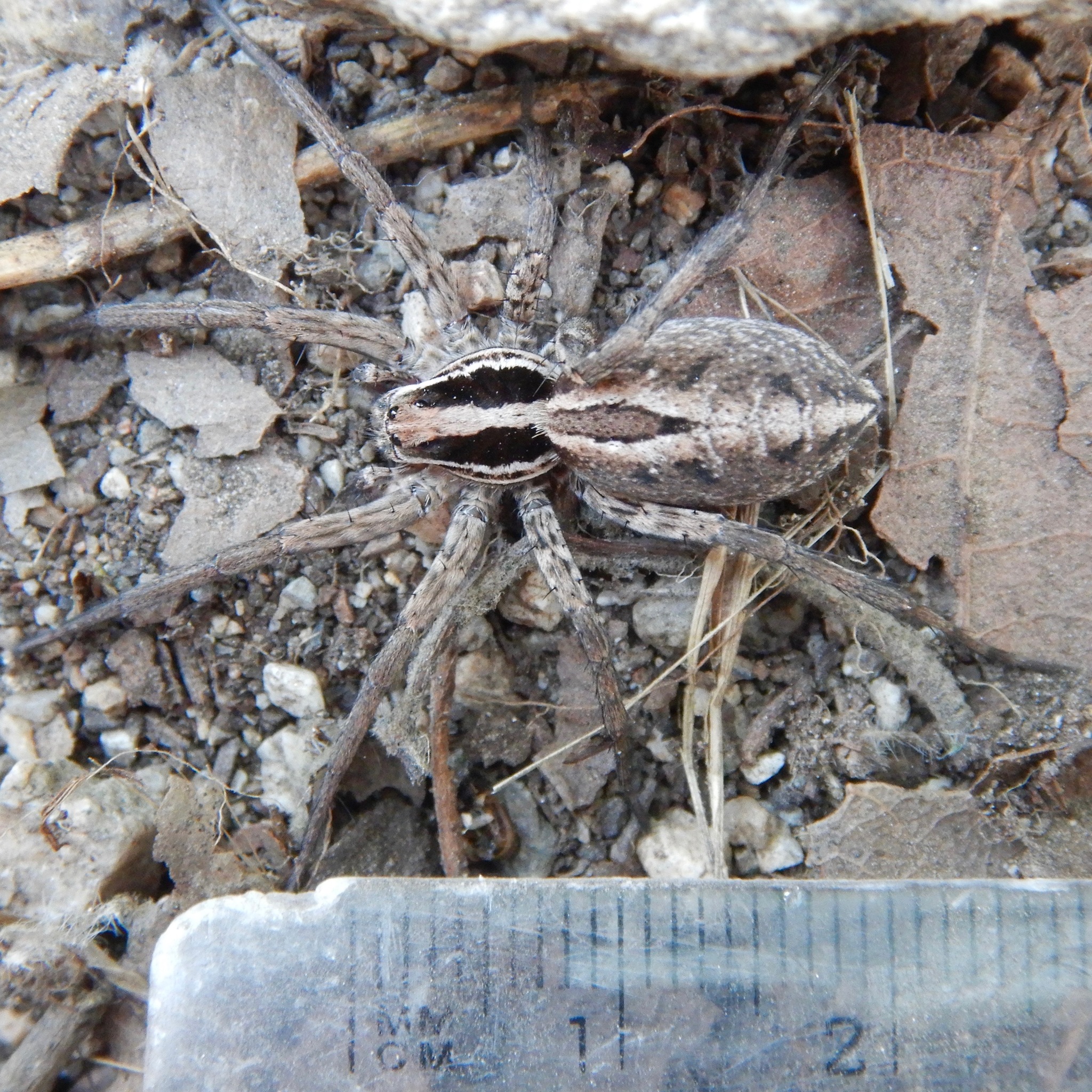
The rearing and mating process for wolf spiders is unique in the spider world. Common to female wolf spiders, S. mccooki carries her egg sac attached to their spinnerets at the end of their abdomen until their spiderlings hatch. Once hatched, the juveniles remain on their mother’s back until they are ready to disperse into the world.
Common to male Schizocosa is a complex leg-drumming display used to attract females during mating season. A 2022 study, published in Biology Letters, indicates that males use specific vibratory signals to court their desired female, creating unique and more complex patterns for larger females – the study hypothesizes this may be due to choosing a female that has a large carrying capacity for juvenile spiders once hatched (Choi etal, 2022). The study also found that females picked males with complex coordination of differing signals that may indicate her suiters athleticism (Choi etal, 2022).
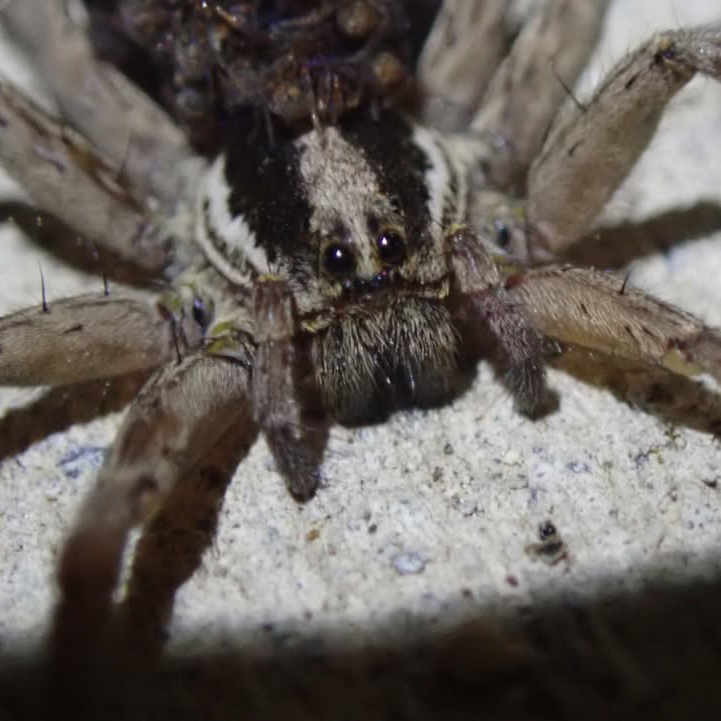
Spiders typically have eyes that suit their hunting styles, and unlike web-building spiders, wolf spiders rely on keen eyesight to capture prey. As mentioned earlier, wolf spiders have eight eyes, with a large pair front and center. Their eyesight is enhanced by a interior reflective layer called the tapetum lucidum that helps to shine light back into the spider’s vision effectively enhancing low-light conditions that aide them in nocturnal predation.
Tapetum lucidum is an evolutionary feature found in both predators and prey such as cats, deer, cows, and some spider species. If you are ever interested in hunting wolf spiders, simply head out with a headlamp on a moonless night, shine your light into the grass and look for two reflective eyes shining back at you from the darks of your backyard.
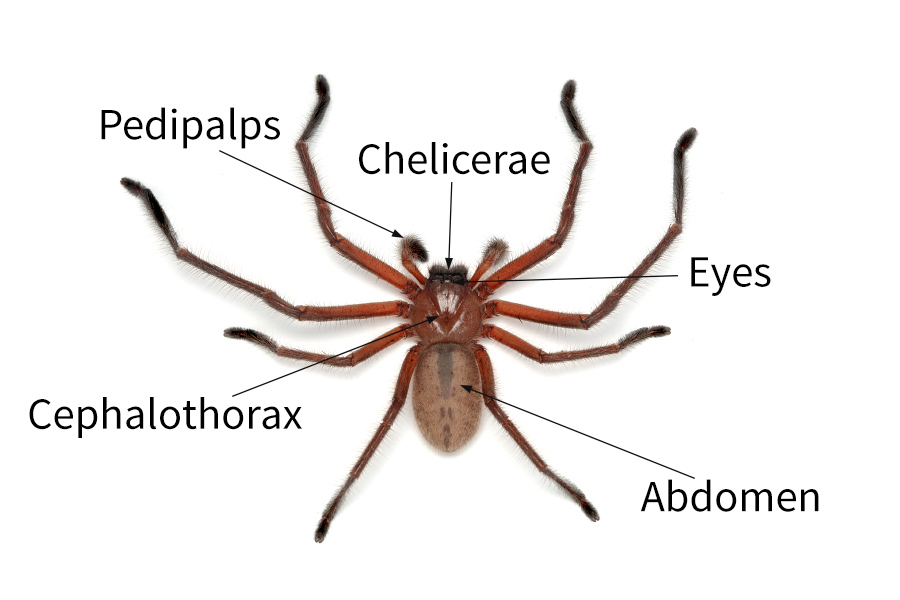
Wolf spiders possess forward-pointing chelicerae, an appendage that almost resembles a well groomed mustache yet operates to aid immobilizing prey while fangs deliver venom at it’s tip. In wolf spiders, the chelicerae are relatively large and well-muscled, giving them the strength to subdue struggling insects during active hunts. Viewed closely, the chelicerae appear dark and glossy, sometimes with fine hairs, and the fangs curve slightly inward at the tips. This arrangement is both efficient for piercing prey and distinguish them from other spider groups such as tarantulas, whose fangs move vertically rather than side-to-side.
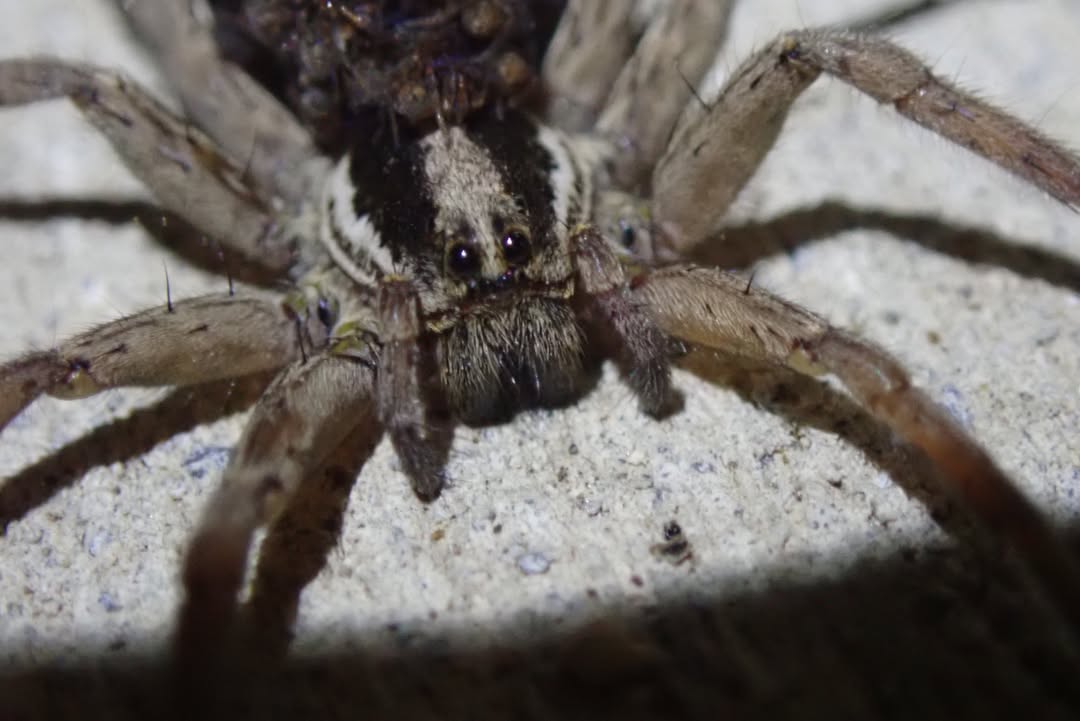
In S. mccooki, the chelicerae are proportionally large relative to the spider’s body size and are typically dark brown to black with a polished sheen that contrasts against the lighter patterned cephalothorax. Strong internal muscles allow the fangs to strike with enough force to quickly immobilize prey such as beetles or crickets. Fine sensory hairs line the cheliceral margins, helping the spider detect movement and handle struggling prey. In males, the chelicerae can also serve a communicative role, sometimes being lifted or vibrated in coordination with leg-drumming during courtship.
A Riparian Predator & Prey
Riparian corridors are home to a wide range of species that link terrestrial and aquatic food webs. Among these, the wolf spider is a key ground-dwelling predator that helps regulate insect populations and provides prey for higher trophic levels.
Wolf spiders are widespread in open habitats such as grasslands, chaparral, and riparian habitats where cobble bars, woody debris, and leaf litter provide hunting grounds and cover. These microhabitats are important refuges not only for wolf spiders but for the many insects they consume. As wolf spiders actively stalk prey such as earwigs, beetles, ants, and crickets, consuming them helps moderate insect communities which indirectly supports plant health thus contributing to ecosystem stability. S. mccooki and other wolf spiders also contribute to cross-boundary energy flow by serving themselves as prey for birds, amphibians, reptiles, and mammals.
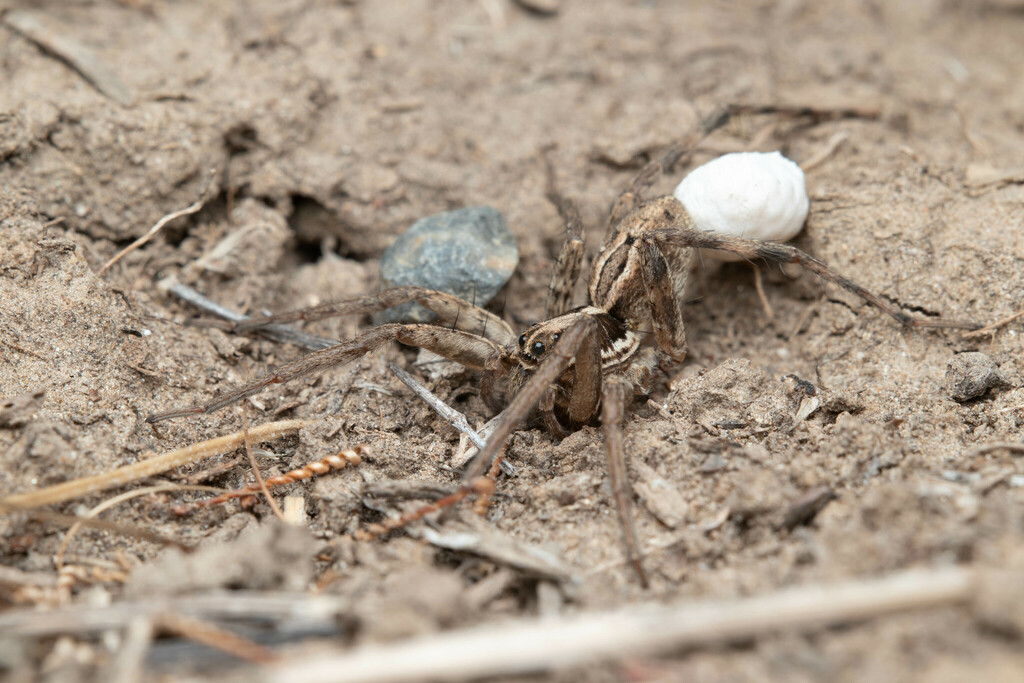
Recognizing the ecological functions of wolf spiders highlights why observation is often a better response than eradication. These spiders are integral components of riparian and terrestrial ecosystems, regulating insect populations and serving as prey for higher trophic levels. Their hunting strategies, reproductive behaviors, and physiological adaptations illustrate the complexity of predator–prey interactions that sustain biodiversity. By taking time to identify and observe a spider before removing or killing it, we not only learn more about local species but also foster an understanding of the interconnected roles that maintain ecosystem stability. In this way, simple curiosity can translate into conservation-minded awareness.
References
- Schizocosa mccooki – Wikipedia
- Common synanthropic spiders in California – Essig Museum of Entomology
- https://a-z-animals.com/animals/spider/wolf-spiders-in-california-everything-you-need-to-know/
- Wolf Spiders | Missouri Department of Conservation
- Male spiders drum out mesmerizing syncopated beats to woo mates | Live Science
- Increased signal complexity is associated with increased mating success | Biology Letters
- Spider anatomy – Spidentify
- Schizocosa mccooki (A Wolf Spider) | Idaho Fish and Game Species Catalog

